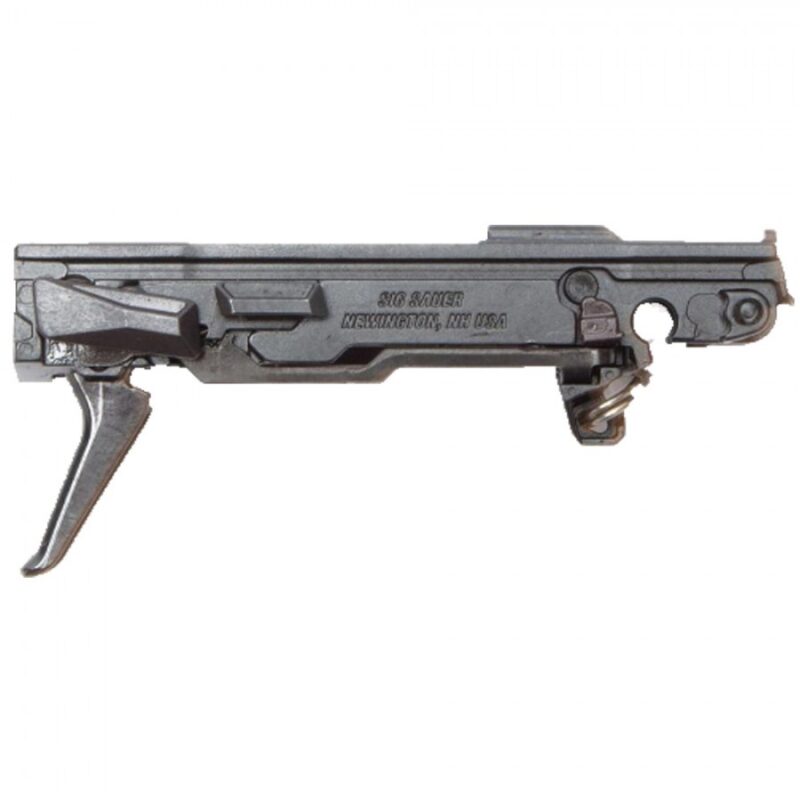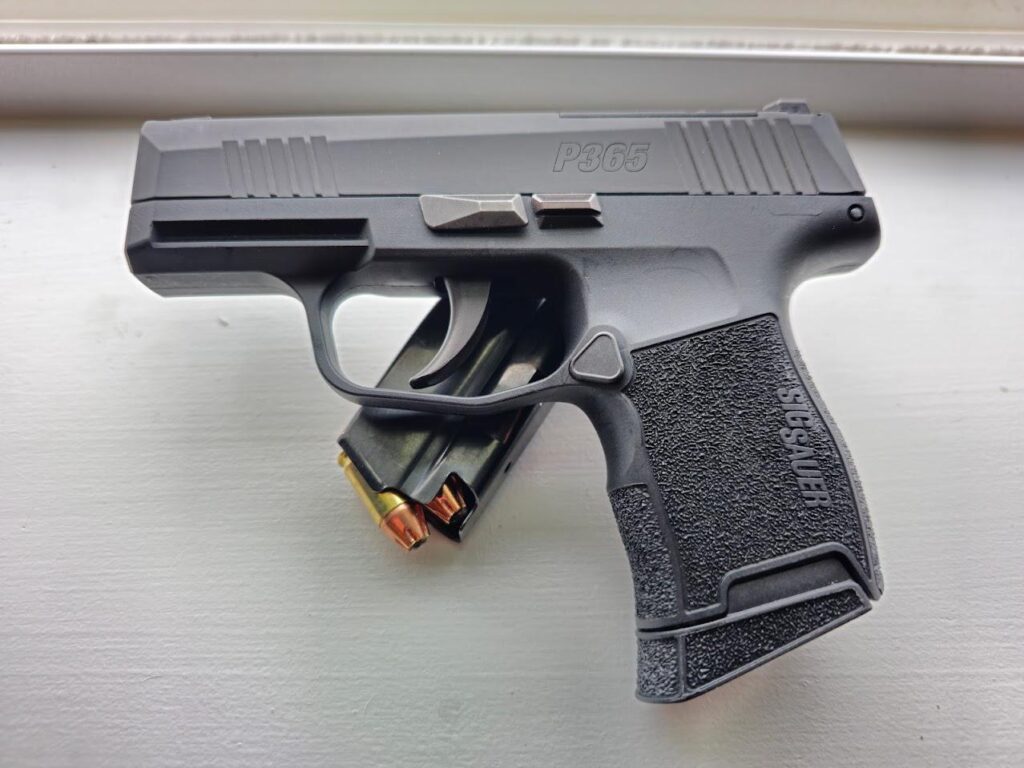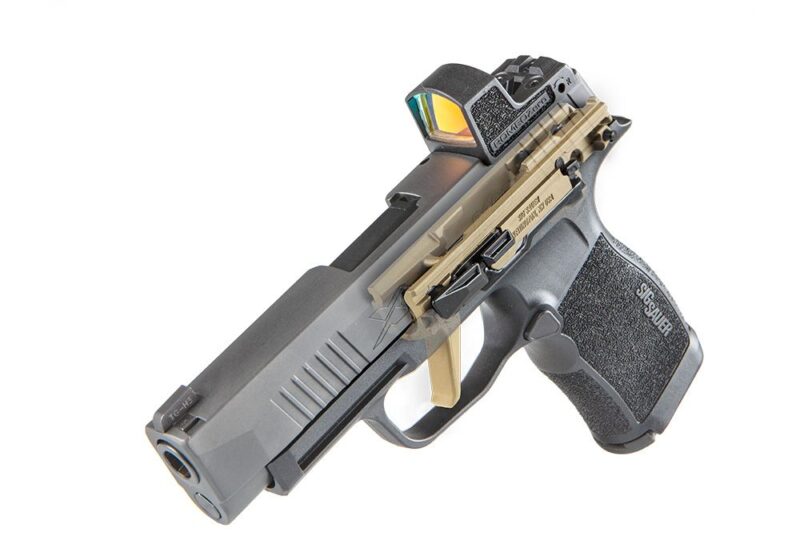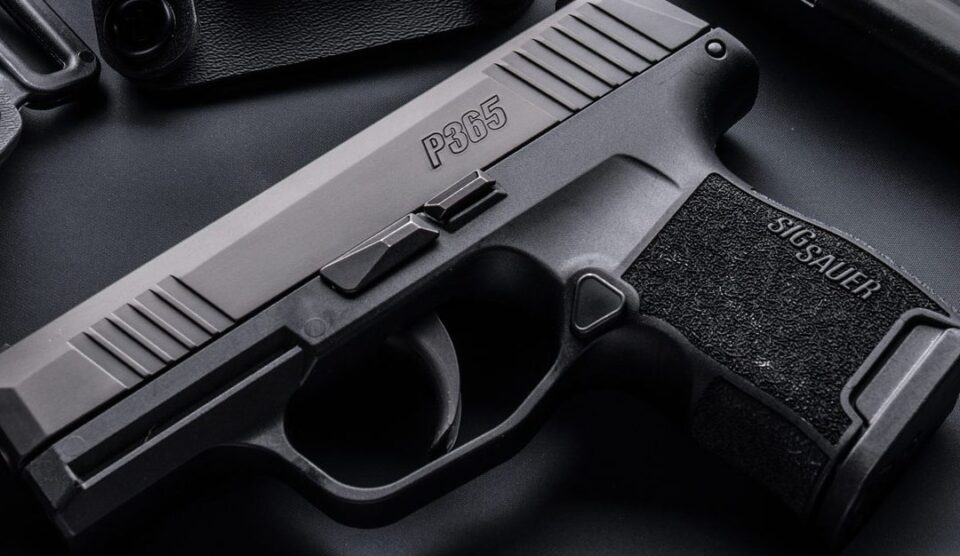The Sig Sauer P365 Fire Control Unit (FCU) stands as a symbol of exceptional firearm engineering, providing a unique combination of power, functionality, and safety. Compact, yet capable, the P365 caters to both everyday carry (EDC) enthusiasts and competitive shooters, embodying Sig Sauer’s commitment to quality without compromise. However, to truly appreciate and exploit its potential, users must understand precisely how this sophisticated unit functions in conjunction with the P365 slide to make the firearm operate.
This article examines a shot fired from the Sig Sauer P365, from the moment the trigger is pulled to the fraction of a second when the round is fired. It provides a step-by-step look at its inner mechanisms and the details of how the fire control unit functions. By understanding this process, owners and enthusiasts can gain a deeper appreciation of the complexity and sophistication of firearm engineering and use this knowledge for optimal and responsible usage. Whether you’re using the P365 for sport, protection, or professional service, a thorough understanding of its inner workings ensures optimal performance and elevates your shooting experience to a whole new level.
Basics of the P365 FCU

The P365 series, belonging to the prestigious lineage of Sig Sauer firearms, is recognized for its compactness, power, and versatility, traits fundamentally derived from its Fire Control Unit (FCU). The FCU, essentially the command center of any firearm, is responsible for controlling the gun’s sequence of operations, including triggering, firing, extracting, and ejecting. Embedded within the P365’s unique polymer grip module, the FCU delivers matchless performance in terms of speed and accuracy making it a favorite among serious shooters.
Peeling back the layers, the P365 FCU comprises several internal mechanisms, each contributing to the seamless functioning of the firearm. Among these components are the trigger, sear, disconnector, and striker – all parts that work harmoniously together from the moment of trigger pull until the bullet leaves the barrel. Significantly, the Striker-fired design of the P365 ensures a consistent trigger pull thereby enhancing accuracy. In layman terms, the gun functions based on a sequence of actions starting from pulling the trigger to eventually discharge a bullet, with the FCU controlling these operations. Understanding these basics sets the groundwork for deeper understanding of the P365’s firing process.
Trigger Pull and Initial Action

The trigger pull, as the name suggests, involves pulling the trigger back until it releases the hammer or striker. In the case of the P365, this falls into the category of striker-fired handguns, where the trigger pull directly engages the striker. Notably, the P365 is celebrated for its consistently smooth and light trigger pull, often cited as having just the right amount of “trigger pull weight”. This term refers to the amount of force needed to overcome the spring tension and release the striker, ultimately firing the shot.
Inside the P365’s FCU, the trigger pull initiates a series of actions involving various parts such as the sear, springs, and disconnector. As the trigger is pulled, it causes the sear to disengage from the striker. The tension in the striker spring is then released, propelling the striker forward to hit the primer of the cartridge. This action, while seemingly simple, involves a delicate interplay between various components within the FCU, exhibiting the beautiful work of firearm engineering.
Safety Aspects of the P365 FCU

Prominent among the features that make the P365 series exceptional is the imperative focus on user safety. Like with any firearm, safety is a critical aspect of the P365’s design and operations. Sig Sauer has designed the P365’s Fire Control Unit (FCU) to integrate several safety components that act as essential preventive measures against accidental discharge, inadvertently increasing user safety.
One key safety feature of the P365 is its unique trigger safety system. This system is designed such that the firearm will only discharge when the trigger is intentionally pulled, hence reducing the risk of unintentional firing. Additionally, the P365 also comes with a striker safety that prevents the striker from moving forward until the trigger is pulled.
This feature, known as the drop safety, makes it impossible for the firearm to discharge if it’s accidentally dropped. Through understanding these safety mechanics, P365 users can better appreciate the EDC firearm, subsequently cultivating responsible handling and usage. Harnessing this information properly can significantly ameliorate safety measures while using this formidable tool.
Maintenance and Troubleshooting
Understanding the P365 and its Fire Control Unit (FCU) goes beyond discharging rounds. Regular maintenance is a practice that extends the firearm’s longevity, improves its functionality, and ensures user safety. Regular cleaning, being essential, prevents dirt and debris from disrupting the mechanisms inside the FCU. For the cleaning process, disassemble the P365 and start by wiping down all of its components. Pay special attention to the nooks and crannies of the FCU, ensuring all residues are removed.
Troubleshooting is another vital aspect of maintaining the P365. Despite its superior engineering, there might be occasional issues related to the trigger pull and firing. Learning how to troubleshoot these common issues can save users valuable time and resources. For example, a stiff trigger pull might hint at a need for lubrication, while misfires might indicate a worn-out striker.
In such cases, inspect the gun to identify the issue, and if necessary, consult a professional or refer to the manufacturer’s guide for help. With regular maintenance and proper troubleshooting, the P365 can uphold its performance, remaining reliable for years to come.
The P365 is more than just a firearm; it’s the culmination of careful engineering aimed at achieving superior performance, reliability, and safety. For those who use the P365, an understanding of its FCU’s mechanics is beyond educational; it enriches the shooting experience. The optimal use of any firearm hinges on safe, responsible handling, and a commitment to maintenance and learning.

